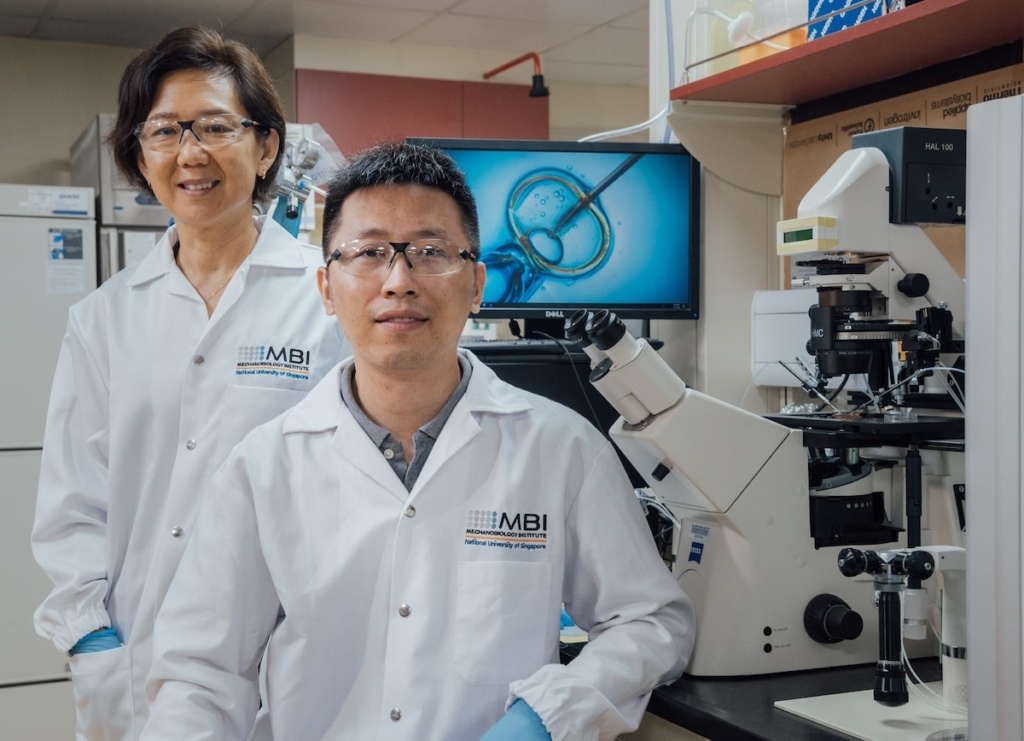
Researchers from the National University of Singapore (NUS) have made a groundbreaking discovery that could potentially revolutionize fertility treatments for older women. A team from the Mechanobiology Institute (MBI) and the NUS Bia-Echo Asia Centre for Reproductive Longevity and Equality (ACRLE) has developed an innovative technique to enhance the reproductive potential of aged oocytes, or immature egg cells.
The study, published in Nature Aging, demonstrates a novel approach to rejuvenating oocytes from older preclinical models by using a young follicular environment. This method partially restores the reproductive function of aged egg cells, potentially leading to better quality eggs for in-vitro fertilization (IVF).
Professor Rong LI, Director of MBI and lead researcher on the project, explained the motivation behind the study: “The inspiration for this research came from the growing need to address age-related fertility issues. It is extremely curious that the female reproductive system, especially the ovarian follicles that contain oocytes, appear to be the fastest ageing system of the human body. This fact prompted us to delve deeper to gain a much better understanding of this ageing process and to discover ways to mitigate it.”
The research team’s approach centered on the relationship between the somatic cells of the ovarian follicle and the oocyte. They created hybrid ovarian follicles through an ex-vivo 3D culturing platform, extracting oocytes from their original follicular environments and transplanting them into new ones.
Initial experiments confirmed that aged granulosa cells, compared to young ones, showed increased indicators of aging, such as DNA damage and factors linked to programmed cell death. The team then demonstrated that an aged follicular environment could reduce the quality and developmental potential of a young oocyte.
In a crucial next step, the researchers created hybrid ovarian follicles containing an aged oocyte in a young follicular environment. They found that the quality and developmental competence of the aged oocyte could be substantially, though not fully, restored through this “nurturing” process. The restoration was attributed to reshaping of the oocyte’s metabolism and gene expression.
Dr. WANG Haiyang, Senior Research Fellow at MBI, highlighted the significance of their findings: “The findings from this study provide a proof-of-concept and the basis for the development of non-invasive cell-based strategies to improve the quality of eggs from older women or women whose reproductive ability is affected by other health conditions, which could lead to improved outcomes of assisted reproductive technologies, such as IVF.”
The team discovered that young granulosa cells were much better at establishing transzonal projections toward the aged oocyte, facilitating the restoration process. They also observed improvements in the function and health of oocyte mitochondria, crucial organelles for energy production and cellular metabolism.
Furthermore, the young follicular environment supported more accurate partitioning of the oocyte genome during maturation, potentially reducing the risk of aneuploidy – the presence of an abnormal number of chromosomes in a cell. These improvements led to a live-birth rate approximately three times higher than that achieved with aged oocytes not exposed to the young follicular environment.
The NUS team has filed a patent application for this innovation, particularly concerning the method used to rejuvenate aged oocytes by exposing them to a young follicular microenvironment.
Looking ahead, the researchers plan to conduct more thorough studies to understand the mechanisms by which the young follicular environment improves aged oocyte quality. They also aim to validate their key findings with human cells and oocytes and develop an optimized follicle cell line that can be used to improve egg quality for better IVF outcomes.



